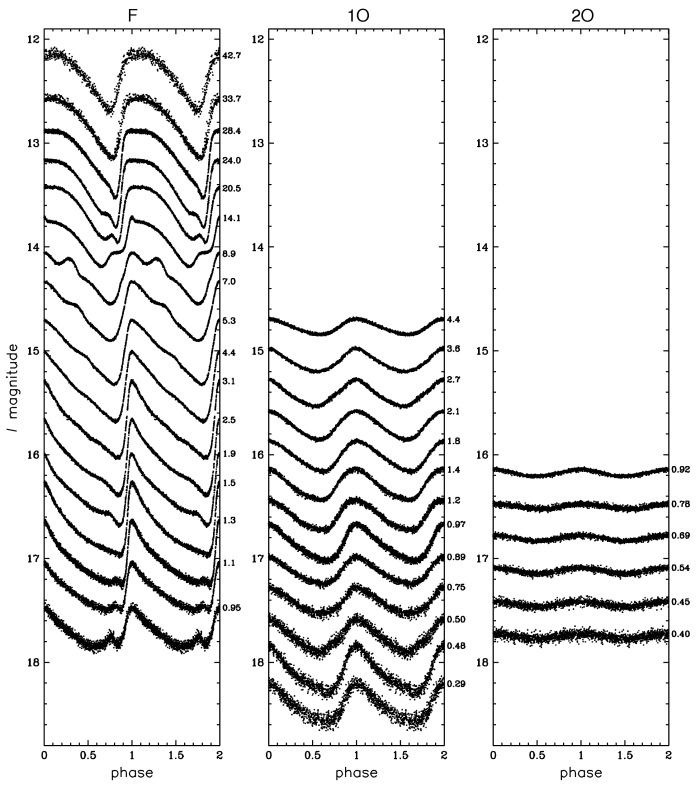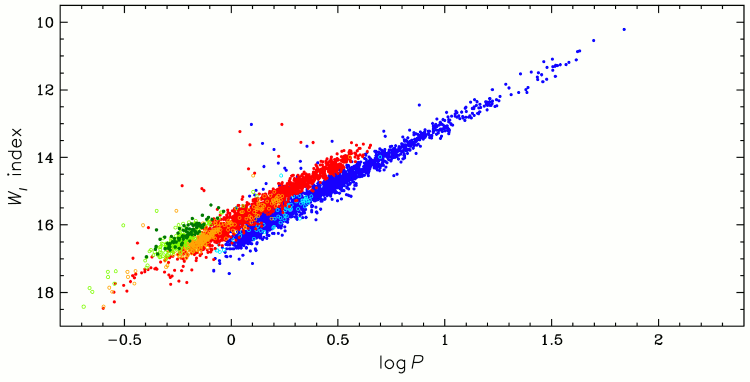The OGLE-III Catalog of Variable Stars
VII. Classical Cepheids in the Small Magellanic Cloud
The seventh part of the OGLE-III Catalog of Variable Stars (OIII-CVS) consists of 4630 classical Cepheids in the Small Magellanic Cloud (SMC). The sample includes 2626 fundamental-mode (F), 1644 first-overtone (1O), 83 second-overtone (2O), 59 double-mode F/1O, 215 double-mode 1O/2O, and 3 triple-mode classical Cepheids. For each object basic parameters, multi-epoch VI photometry collected within 8 or 13 years of observations, and finding charts are provided in the OGLE Internet archive.

We present objects of particular interest: exceptionally numerous sample of single-mode second-overtone pulsators, five double Cepheids, two Cepheids with eclipsing variations superimposed on the pulsation light curves. At least 139 first-overtone Cepheids exhibit low-amplitude secondary variations with periods in the range 0.60-0.65 of the primary ones. These stars populate three distinct sequences in the Petersen diagram. The origin of this secondary modulation is still unknown. Contrary to the Large Magellanic Cloud (LMC) we found only a few candidates for anomalous Cepheids in the SMC. This fact may be a clue for the explanation of the origin of the anomalous Cepheids. The period and luminosity distributions of Cepheids in both Magellanic Clouds suggest that there are two or three populations of classical Cepheids in each of the galaxies. The main difference between the LMC and SMC lays in different numbers of Cepheids in each group. We fit the period-luminosity (PL) relations of SMC Cepheids and compare them with the LMC PL laws.

The OGLE-III Catalog of classical Cepheids in the SMC is available from
the OGLE Internet archive. See README file there for details.
PLEASE cite the following paper when using the data or referring to these OGLE results:
Soszynski et al., 2010,
Acta Astron., 60, 17
(arXiv:1003.4518)
Any comments about the data and the form of their presentation are welcome as they can improve the future releases of catalogs of variable stars detected by the OGLE collaboration. Send your messages to this address.
 back
back